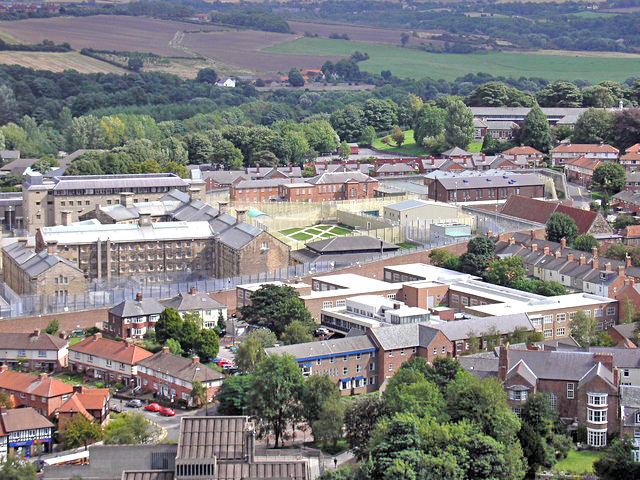Opened 19th century | Security class Adult Male/Category B Managed by HM Prison Services | |
 | ||
Capacity 1017 as of 8th March 2011 Population 981 (as of October 2006) | ||
HM Prison Durham is a Victorian era local Category B men's prison, located in the Elvet area of Durham in County Durham, England. Built in 1819, the prison continues to be operated by Her Majesty's Prison Service. Women prisoners were moved in 2005 due to overcrowding and suicides.
Contents
History
Durham Prison was built in 1810, consisting of some 600 cells and took its first prisoners in 1819. It is adjacent to Durham's Crown Courts. The prison has held a variety of different categories of prisoners, both male and female over the course of its history. Between 1869 and 1958, 95 judicial executions took place on the gallows at Durham prison or the court house. In 1832, protests over working conditions in the South Shields workhouse were supported by miner strikes. Soldiers were sent to evict striking miners from their pubs. One miner was convicted of the murder of a local magistrate near Jarrow Slake. He was hanged amid heightened security of 50 mounted Hussars and 50 infantrymen to protect the gallows. His body was gibbeted after death.
On 17 December 1958, the final execution took place when Private Brian Chandler (aged 20) was hanged for the murder of Martha Dodd during the course of theft. Chandler was a soldier, based at Catterick camp, who beat 83-year-old Dodd to death with a hammer.
During the late 1960s and 1970s the prison became a study project for Stan Cohen and Laurie Taylor, which led to their publication of three books, namely Psychological Survival: The Experience of Long-term Imprisonment (1972), Escape Attempts (1976) and Prison Secrets (1978). Cohen additionally published Visions of Social Control: Crime, Punishment and Classification (1985).
Durham (which was a Category A prison for men and women at the time) was praised in 2001 by Her Majesty's Chief Inspector of Prisons for its progressive regime, integration of inmates and falling levels of violence. However, in 2003 it was revealed that Durham had the highest suicide rate of all prisons in England.
In 2004 a report by the Chief Inspector of Prisons criticised Durham for being severely overcrowded. The report highlighted the lack of education and work opportunities for inmates at the prison.
In 2005 Durham's female high-security wing with 120 prisoners was discontinued and the prisoners transferred elsewhere, after HM Inspectorate of Prisons reports concluded, following several suicides, that it was unsuitable for housing female prisoners.
On 13 July 2011 it was announced that along with several other prisons, HMP Durham would be put up for market testing as part of a Ministry of Justice (United Kingdom) budget plan to make savings of almost 25%.
A 2014 report by HM Inspectorate of Prisons found that a third of inmates tested positive for drug use, a rate almost twice as high as would be expected in similar prisons. Rates of violence were also higher than expected which indicated that monitoring should be improved. The prison was, however, praised for the quality of work activity and learning available to prisoners.
The prison today
Durham is currently a Category B local prison for convicted and remand adult male prisoners, primarily serving the courts of County Durham, Tyne and Wear and Teesside. It is divided into seven wings, plus a segregation section and healthcare section. The prison offers full and part-time education to all inmates, including courses on data input, bricklaying, woodwork, painting and decorating, waste management and gardening.
